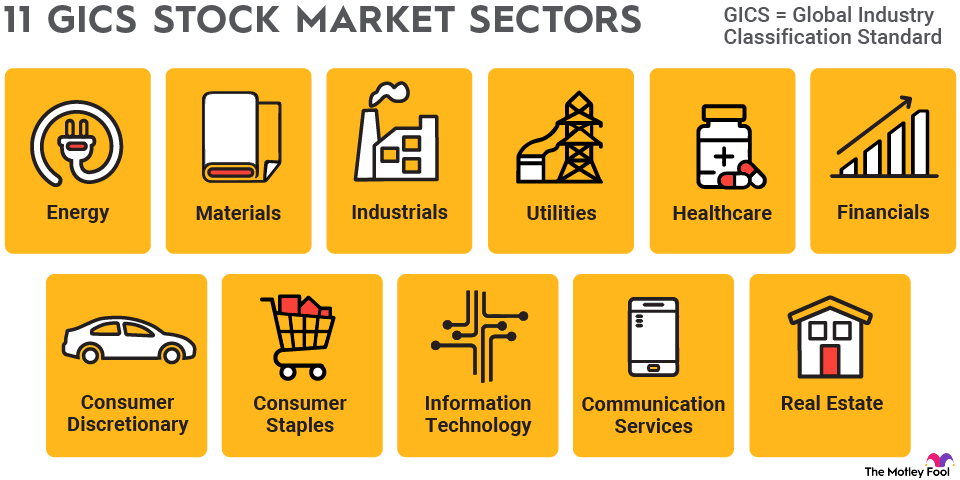A stock market sector is a group of stocks that have a lot in common with each other, usually because they are in similar industries. There are 11 different stock market sectors, according to the most commonly used classification system, known as the Global Industry Classification Standard (GICS).
We categorize stocks into sectors to make it easy to compare companies that have similar business models. Sectors also make it easier to compare which stocks are making the most money.

Investing in stock sectors
At a glance, the 11 GICS stock market sectors are:
1. Energy sector
The energy sector covers companies that do business in the oil and natural gas industry. It includes oil and gas exploration and production companies, as well as producers of other consumable fuels like coal and ethanol.
The energy sector also includes the related businesses that provide equipment, materials, and services to oil and gas producers. It doesn't include many renewable energy companies, which instead are considered utilities.
Large U.S. stocks in the energy sector are ExxonMobil (XOM -0.51%) and Chevron (CVX -0.60%).
2. Materials sector
The materials sector includes companies that provide various goods for use in manufacturing and other applications. You'll find makers of chemicals, construction materials, and containers and packaging within the materials sector, along with mining stocks and companies specializing in making paper and forest products.
Well-known materials stocks include paint maker Sherwin-Williams (SHW +0.68%) and chemicals manufacturer DuPont (DD -0.34%).
3. Industrials sector
The industrials sector encompasses a wide range of different businesses that generally involve the use of heavy equipment. Transportation stocks such as airlines, railroads, and logistics companies are found within the industrials sector, as are companies in the aerospace, defense, construction, and engineering industries.
Companies making building products, electrical equipment, and machinery also fall into this sector, as do many conglomerates.
4. Utilities sector
The utilities sector encompasses every different type of utility company you can imagine. Within the sector, you'll find utilities specializing in making electrical power available to residential and commercial customers, as well as specialists in natural gas transmission and distribution. Other utilities are responsible for delivering water to customers.
Some utility companies engage in more than one of these different subspecialties. Independent producers of power and renewable electricity also land in the utilities sector, even though they don't exactly resemble the traditional regulated utility.
Utilities tend to be regional in scope, so you might have heard of Duke Energy (DUK +0.09%) in the Southeast U.S., Consolidated Edison (ED -0.76%) in the Northeast, and American Electric Power (AEP -0.17%) across much of the Ohio Valley and the Southern Plains states.
Fintech
Related investing topics
Sector investing
If you are interested in a certain sector but are not ready to invest in a specific company within that sector, you can still participate in sector investing. Seek out lower-risk investments like exchange-traded funds (ETFs) and mutual funds that are specifically tied to a sector.
For example, if you aren't comfortable evaluating health care stocks but want exposure in your portfolio, an index fund that tracks the sector could be the best way to go. Sector investing plays an increasingly important role in the strategies that investors use today.









